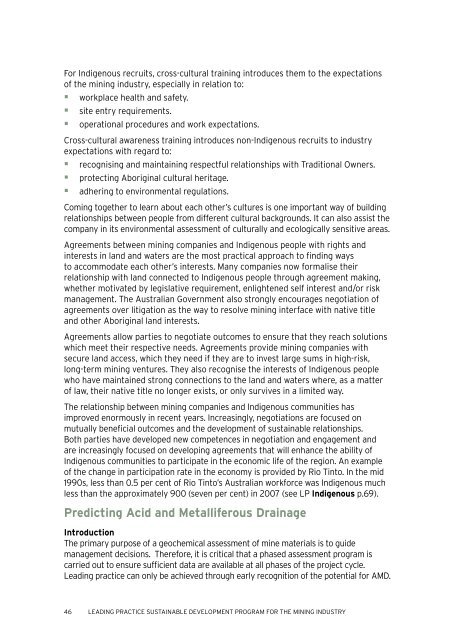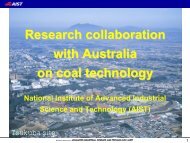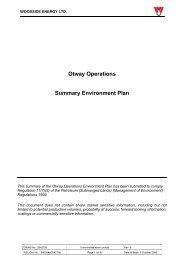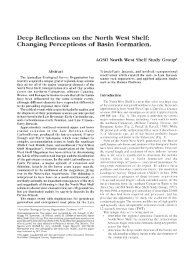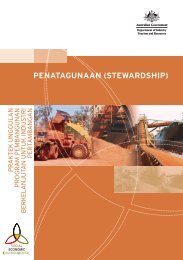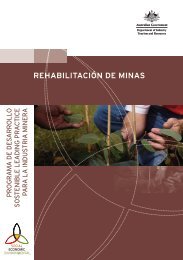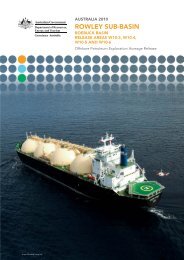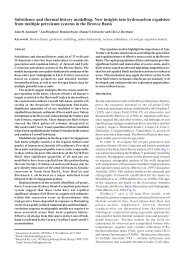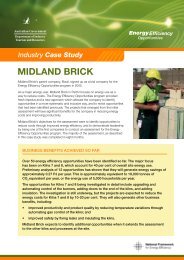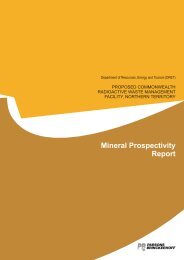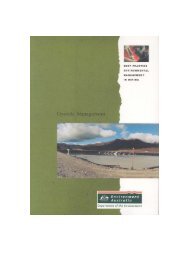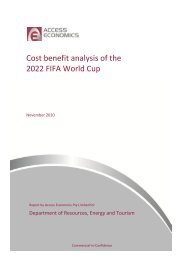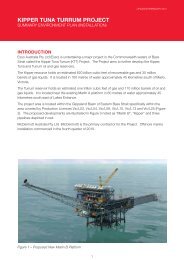A guide to leading practice sustainable development in mining
A guide to leading practice sustainable development in mining
A guide to leading practice sustainable development in mining
You also want an ePaper? Increase the reach of your titles
YUMPU automatically turns print PDFs into web optimized ePapers that Google loves.
For Indigenous recruits, cross-cultural tra<strong>in</strong><strong>in</strong>g <strong>in</strong>troduces them <strong>to</strong> the expectations<br />
of the m<strong>in</strong><strong>in</strong>g <strong>in</strong>dustry, especially <strong>in</strong> relation <strong>to</strong>:<br />
workplace health and safety.<br />
site entry requirements.<br />
operational procedures and work expectations.<br />
Cross-cultural awareness tra<strong>in</strong><strong>in</strong>g <strong>in</strong>troduces non-Indigenous recruits <strong>to</strong> <strong>in</strong>dustry<br />
expectations with regard <strong>to</strong>:<br />
recognis<strong>in</strong>g and ma<strong>in</strong>ta<strong>in</strong><strong>in</strong>g respectful relationships with Traditional Owners.<br />
protect<strong>in</strong>g Aborig<strong>in</strong>al cultural heritage.<br />
adher<strong>in</strong>g <strong>to</strong> environmental regulations.<br />
Com<strong>in</strong>g <strong>to</strong>gether <strong>to</strong> learn about each other’s cultures is one important way of build<strong>in</strong>g<br />
relationships between people from different cultural backgrounds. It can also assist the<br />
company <strong>in</strong> its environmental assessment of culturally and ecologically sensitive areas.<br />
Agreements between m<strong>in</strong><strong>in</strong>g companies and Indigenous people with rights and<br />
<strong>in</strong>terests <strong>in</strong> land and waters are the most practical approach <strong>to</strong> f<strong>in</strong>d<strong>in</strong>g ways<br />
<strong>to</strong> accommodate each other’s <strong>in</strong>terests. Many companies now formalise their<br />
relationship with land connected <strong>to</strong> Indigenous people through agreement mak<strong>in</strong>g,<br />
whether motivated by legislative requirement, enlightened self <strong>in</strong>terest and/or risk<br />
management. The Australian Government also strongly encourages negotiation of<br />
agreements over litigation as the way <strong>to</strong> resolve m<strong>in</strong><strong>in</strong>g <strong>in</strong>terface with native title<br />
and other Aborig<strong>in</strong>al land <strong>in</strong>terests.<br />
Agreements allow parties <strong>to</strong> negotiate outcomes <strong>to</strong> ensure that they reach solutions<br />
which meet their respective needs. Agreements provide m<strong>in</strong><strong>in</strong>g companies with<br />
secure land access, which they need if they are <strong>to</strong> <strong>in</strong>vest large sums <strong>in</strong> high-risk,<br />
long-term m<strong>in</strong><strong>in</strong>g ventures. They also recognise the <strong>in</strong>terests of Indigenous people<br />
who have ma<strong>in</strong>ta<strong>in</strong>ed strong connections <strong>to</strong> the land and waters where, as a matter<br />
of law, their native title no longer exists, or only survives <strong>in</strong> a limited way.<br />
The relationship between m<strong>in</strong><strong>in</strong>g companies and Indigenous communities has<br />
improved enormously <strong>in</strong> recent years. Increas<strong>in</strong>gly, negotiations are focused on<br />
mutually beneficial outcomes and the <strong>development</strong> of <strong>susta<strong>in</strong>able</strong> relationships.<br />
Both parties have developed new competences <strong>in</strong> negotiation and engagement and<br />
are <strong>in</strong>creas<strong>in</strong>gly focused on develop<strong>in</strong>g agreements that will enhance the ability of<br />
Indigenous communities <strong>to</strong> participate <strong>in</strong> the economic life of the region. An example<br />
of the change <strong>in</strong> participation rate <strong>in</strong> the economy is provided by Rio T<strong>in</strong><strong>to</strong>. In the mid<br />
1990s, less than 0.5 per cent of Rio T<strong>in</strong><strong>to</strong>’s Australian workforce was Indigenous much<br />
less than the approximately 900 (seven per cent) <strong>in</strong> 2007 (see LP Indigenous p.69).<br />
Predict<strong>in</strong>g Acid and Metalliferous Dra<strong>in</strong>age<br />
Introduction<br />
The primary purpose of a geochemical assessment of m<strong>in</strong>e materials is <strong>to</strong> <strong>guide</strong><br />
management decisions. Therefore, it is critical that a phased assessment program is<br />
carried out <strong>to</strong> ensure sufficient data are available at all phases of the project cycle.<br />
Lead<strong>in</strong>g <strong>practice</strong> can only be achieved through early recognition of the potential for AMD.<br />
46 LEADING PRACTICE SUSTAINABLE DEVELOPMENT PROGRAM FOR THE MINING INDUSTRY


